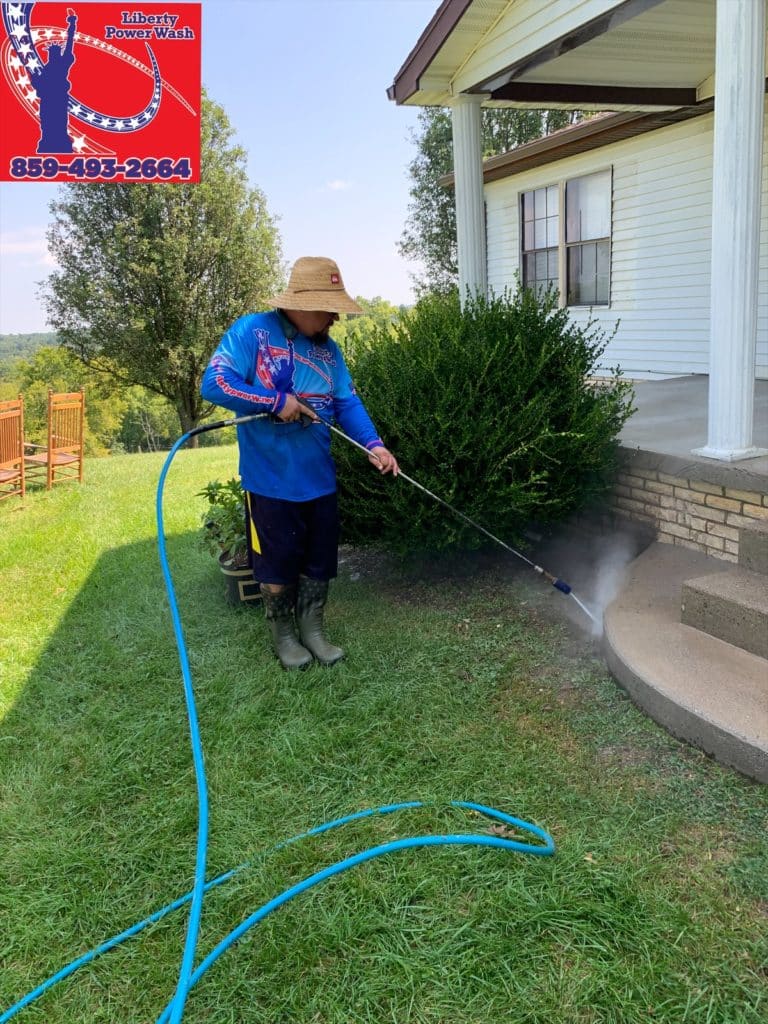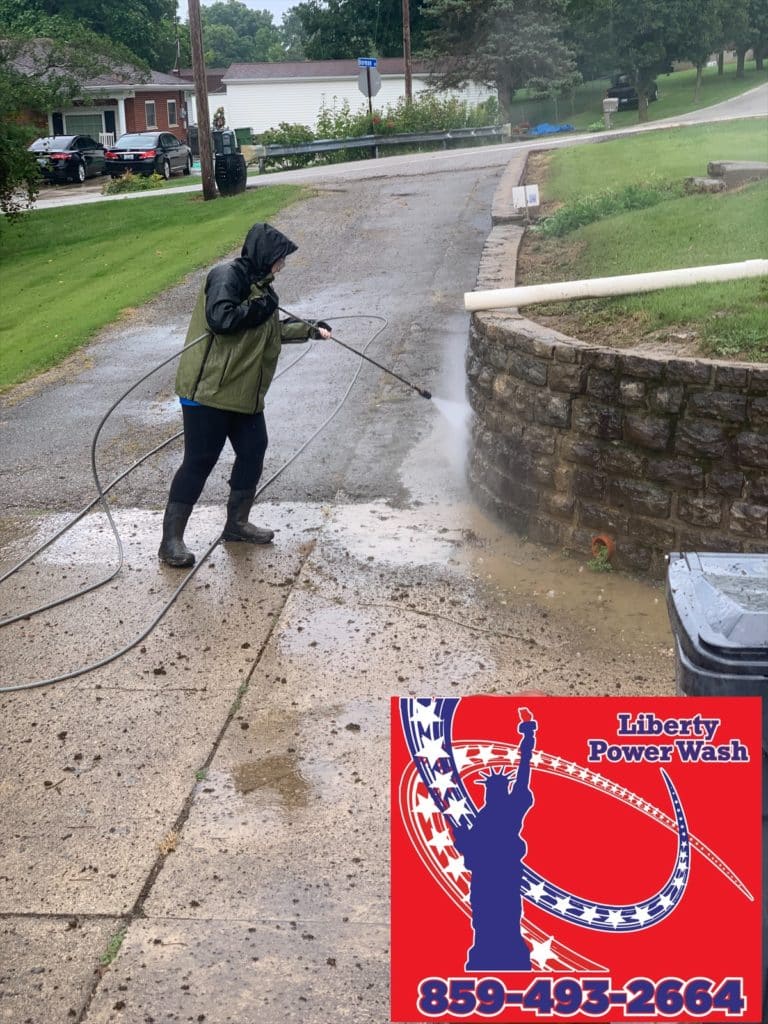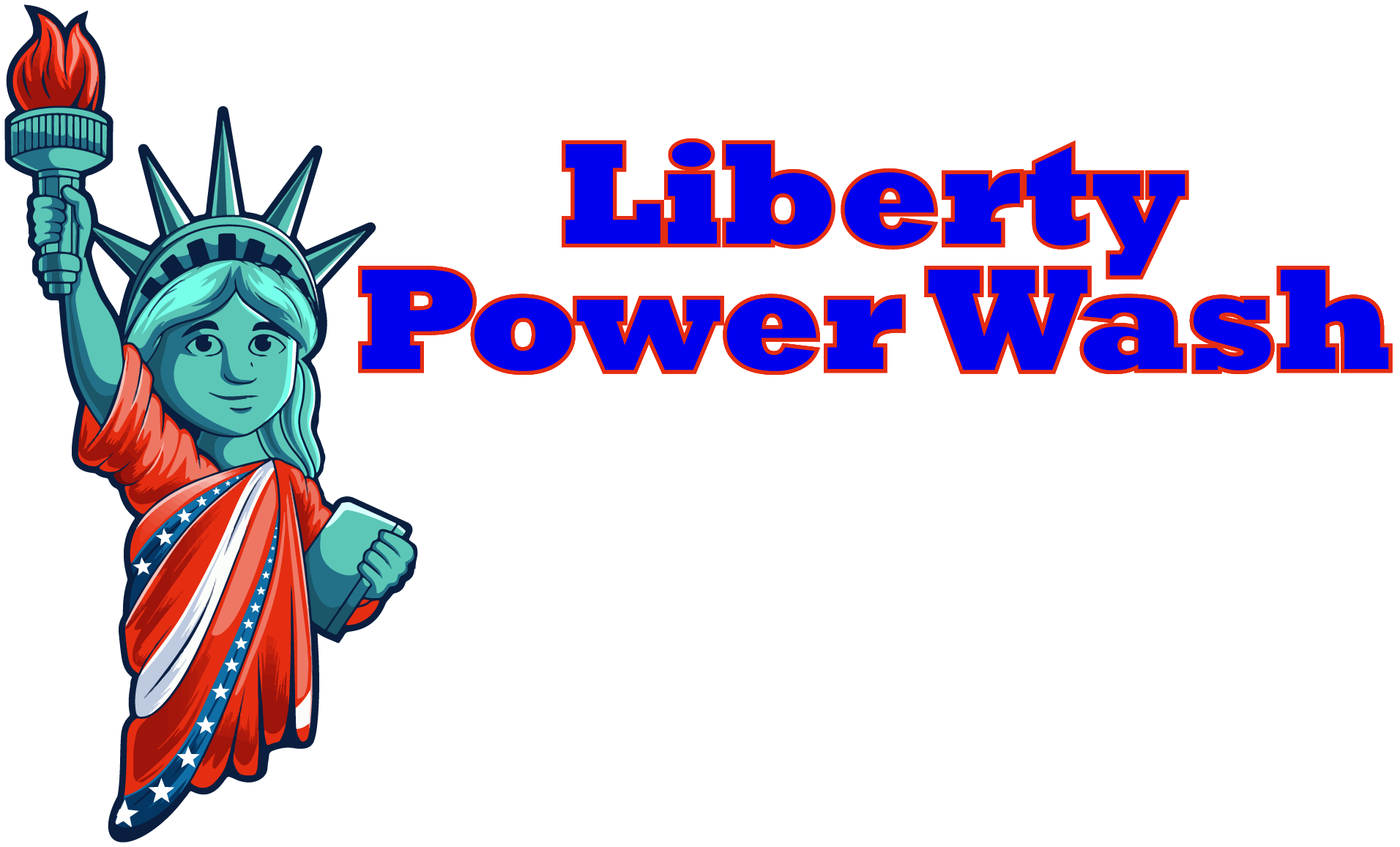Pressure washers are valuable tools that make exterior cleaning a breeze when used properly. The machines use a high-pressure stream of water to blast things like dirt and grime off of outdoor surfaces. That’s the principle, anyway, but how do pressure washers work exactly? What happens inside the machine to make sure that dirt, grease, mold, mildew, salt, and stains are no match?

The Difference Between Power Washing and Pressure Washing
First things first, what is the difference between power washing and pressure washing and can the same machine be used for both? When it comes down to it, the key difference between a power washer and a pressure washer is a heating element. While both processes use a highly-pressurized stream of water, the water that comes out of a power washer is hot.
Both power washing and pressure washing are highly effective for different projects. Some stains don’t need heat to remove them, and some do. Because of this, if you need power washing completed, in most cases you can’t use a pressure washer to do it. As we focus on how pressure washers work today, just know we won’t be talking about heating elements.
The Mechanics of How Pressure Washers Work
The science of how pressure washers remove dirt and debris is pretty straightforward: the pressurized stream of water carries a lot of kinetic energy, and this breaks grime apart from surfaces like a constant rain of tiny hammer blows. At its core, a pressure washer is a water pump powered by an electric motor. It accelerates ordinary tap water and shoots it through a special hose and nozzle to maximum effect.
Water Inlet
The water inlet is a hose that allows the pressure washer to connect to its water source. The inlet usually also contains a filter so dirt is prohibited from entering the machine. This is especially important since anything the pressure washer spits out will be expelled at missile-speeds.
Most pressure washers will also come equipped with intake valves for detergents.

Gas Engine or Electric Motor
The engine or motor provides the power that makes pressure washers work. The source of power in a pressure washer is often determined by size: small handheld machines are more likely to have electric motors while industrial units often take advantage of gasoline’s kick. Gas engines are better for jobs that will take a long time, especially if an electric power source is not handy. Electric units will come with a built-in circuit breaker to prevent electrical incidents.
Water Pump
Perhaps the most important part of making pressure washers work, the water pump serves as the heart of the unit. When the engine pulls the pump one way, the pump pulls water in from the faucet; when the engine pushes the pump the other way, the pump expels the water at pressurized speeds. Industry standard designs pumps to handle a water flow of about 1–2 gallons per minute.
Hose
The hose is a tube running from the unit with the pump to whatever nozzle or attachment is in use. This tubing is specially designed so it doesn’t rip apart when high-powered water courses through it, so it is often reinforced with wire mesh and multiple layers of high-density plastic.
Pressure washers work best when the pressure rating on the hose exceeds that of the pump, often by 300% as a precaution. This is the case with commercially-available units in which the hose comes with the pump. For example, a pressure washer rated at 2000 psi will require a hose capable of withstanding pressures of at least 6000 psi.
Attachments
The nozzle at the end of the hose determines the shape and focus of the water coming out of the unit. These follow a standard system of designation. The nozzle or attachment used should depend on your cleaning project. Trigger guns are common for regular projects, but other options are available, including spinning cleaning wands and rotating scrubbing brushes.

Understanding Pressure Washer Nozzles
As every pressure washing project is different, the nozzle used should match the surface being cleaned and the substance being removed. The settings range from most concentrated to least. Always read the instructions before operating a pressure washer and follow proper safety precautions during operation. It is also a good idea to test your pressure settings on an inconspicuous part of your surface before going at it hammer-and-tongs.
Red: 0-degree – The red setting delivers the most focused and concentrated water pressure available. This kind of pressure will cut through wood, roof shingles, and siding and should only be applied to the toughest stains on the toughest materials, like metal.
Yellow: 15-degree – Delivering a slightly less pressurized stream, this nozzle can be used to project water to higher stories or strip off paint and grease.
Green: 25-degree – This setting is a good neutral ground, or as neutral as pressurized water can be. It is ideal for tackling dirt and grime on surfaces like sidewalks and driveways.
White: 40-degree – This setting on pressure washers works well for windows and vehicles and other more delicate surfaces. The spray is wide and less likely to rip apart the surface being cleaned.
Black: Detergent – For those pressure washers equipped to dispel soap, the black nozzle will disperse the detergent evenly and at relatively low pressure.
